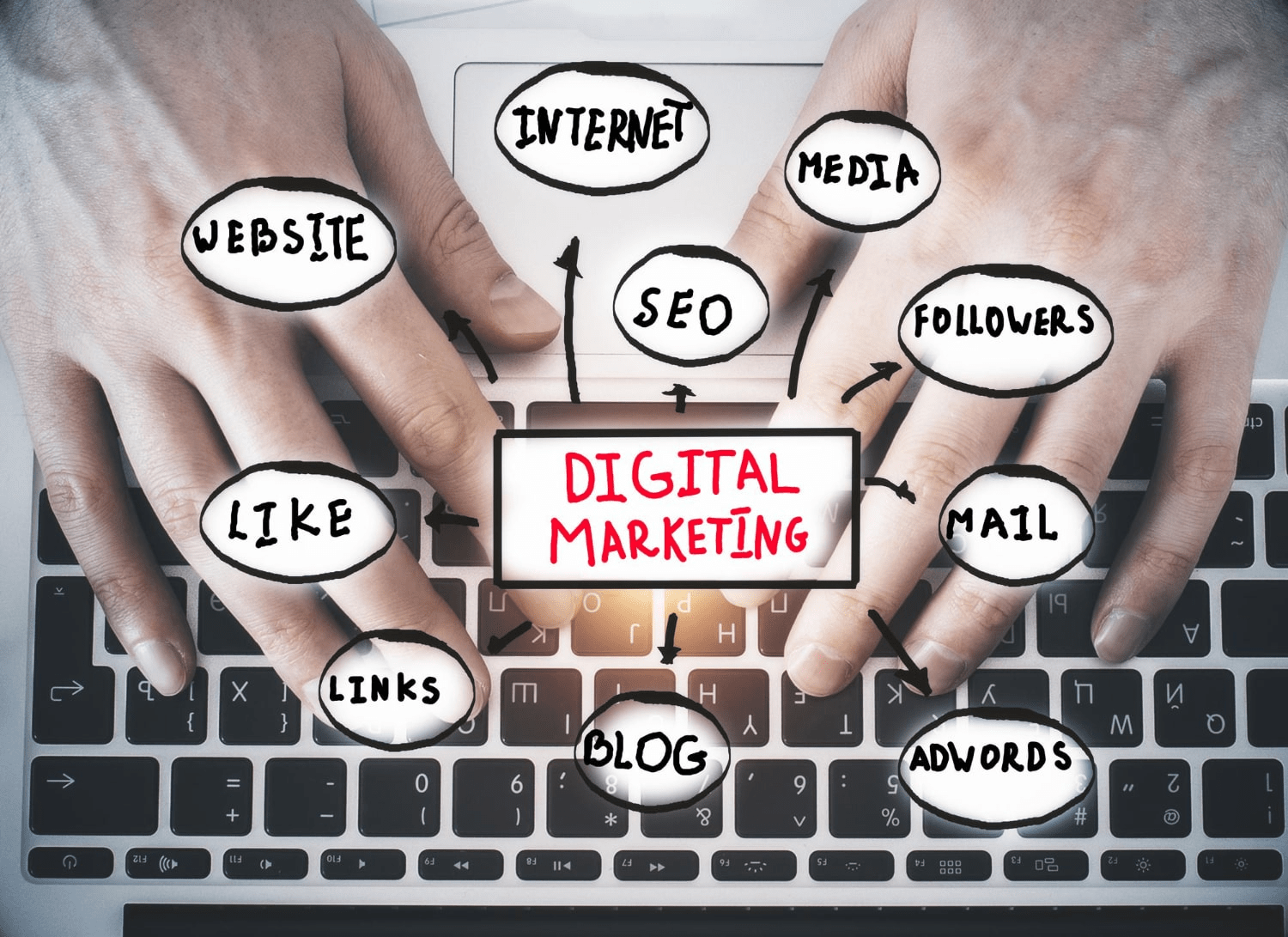It’s a digital age, and the Internet is bustling with activity. With billions of users, social media platforms have become virtual global communities, making social media advertising an essential part of any marketing strategy. The focus of this blog post will be to explore the effectiveness of social media advertising and understand the factors that influence it.
Social Media Advertising: The New Norm
Social media advertising has become a mainstream marketing approach, with businesses worldwide investing significantly in social ads. What makes social media advertising unique is its blend of precision and broad reach. From Facebook and Instagram to LinkedIn and TikTok, most social platforms offer businesses diverse ad types and sophisticated audience targeting capabilities that ensure your message reaches the right eyes.
The efficiency of social media advertising also lies in its cost-effectiveness. The social media advertising cost is often lower than traditional advertising, such as TV or print media, allowing businesses of all sizes to reach their target audience without straining their budget. But it’s not just about reaching people; it’s about reaching the right people – your target market.
Reaching the Right Audience through Social Media Ads

One of the defining features of digital advertising is the ability to identify and reach your target audience. Platforms like Facebook and Instagram offer comprehensive tools within their social ads manager to define and refine your audience based on demographics, interests, behavior, and more.
The ability to zero in on your target users can drastically improve your ad campaigns’ success, increasing the probability of your ads reaching potential customers. These audience-targeting capabilities have made social platforms indispensable tools for any digital marketing campaign.
Leveraging Diverse Social Ad Campaigns
Social media platforms offer a plethora of ad campaign options, from video ads on YouTub

e to promoted tweets on Twitter, slideshow ads on Facebook to bumper ads on LinkedIn. These ad types provide businesses with the flexibility to tailor their messaging and presentation to suit their target audience and campaign objectives.
For instance, Instagram advertising is visually oriented, making it perfect for businesses that want to tell their brand story through stunning images or short videos. Similarly, LinkedIn ads are more suited for B2B marketing and job recruitment. Twitter ads can be used to drive conversation and engagement, while TikTok ads capitalize on the platform’s viral nature.
The effectiveness of these social ad campaigns can be tracked and optimized using the platform’s ads performance metrics, offering valuable insights into ad engagement, website traffic, and potential e-commerce sales.
Cost Versus Benefit: Social Media Advertising Costs

A considerable advantage of social media advertising lies in its cost-effectiveness. Unlike traditional advertising mediums, social advertising costs can be controlled with a flexible ad budget, allowing you to spend what you can afford while still reaching a large number of social media users.
Understanding how much to allocate to your ad spend is crucial. This depends on the social media platform, the type of social ads, ad placements, and your overall social media marketing objectives. Whether you are investing in Facebook’s dynamic ads or Instagram’s collection ads, the cost should always be evaluated against the expected return.
The Impact of Video Ads and User-Generated Content (UGC)

In the realm of social media advertising, video content, and user-generated content play a significant role. Video ads, whether they are in-feed ads on Facebook, YouTube ads, or short video promotions on TikTok, are increasingly popular due to their engaging nature and high user interaction rates.
UGC, on the other hand, can significantly boost the authenticity and trustworthiness of your brand. Encouraging social media users to create and share content related to your brand can lead to more organic posts, which can have a higher impact than ads paid for.
Social Media Advertising: A Look at Individual Social Media Platforms

Facebook and Instagram Ads: Harnessing the Power of Social Giants
Facebook and Instagram, two of the most influential social media platforms, are home to billions of users worldwide. This vast network of users has made these social media sites a thriving marketplace for businesses, with their diverse advertising options significantly driving brand visibility, audience engagement, and sales conversions.
With ad types ranging from single image ads, video ads, collection ads, and carousel ads to messenger ads, Instagram ads and Facebook offer a myriad of creative avenues to share your brand story. These ad types can accommodate various marketing objectives, whether you aim to boost website traffic, drive e-commerce sales, or increase follower engagement.
What’s more, Facebook and Instagram’s ads manager tool lets businesses have control over their budget, scheduling, and, most importantly, ad placements. This means that you can tailor your social ads to appear in specific locations within the platforms, such as in the news feed, stories, or within in-app games.
These social media ads allow businesses to target their audience based on a comprehensive set of criteria. This includes the user’s age, gender, location, interests, and even their behavior on the platforms. By narrowing down your target audience, you’re more likely to reach potential customers, thus increasing the effectiveness of your social media advertising strategy.
LinkedIn Ads: Targeting Professionals and Businesses

Unlike most social platforms, LinkedIn serves as a professional network where industry leaders, job seekers, and companies convene. The professional nature of this social platform makes LinkedIn ads particularly effective for B2B marketing, job recruitment, and industry-related promotions.
LinkedIn offers a suite of advertising options, including text ads, sponsored content, follower ads, LinkedIn messaging ads, and dynamic ads. Each ad type provides unique benefits. For instance, follower ads can help you grow your audience, while messaging ads allow you to engage with your target users directly in a personalized way.
To optimize your ads on LinkedIn, it’s essential to utilize its robust ad account features. The platform provides comprehensive ad performance metrics and insights, which can help you gauge your ad campaign’s success and tweak it for better results.
Twitter Ads: Sparking Conversations and Trends
Twitter, with its fast-paced, dialogue-driven nature, provides businesses with unique opportunities for engagement. Twitter ads can be used to spur conversations, drive trends, and even manage customer service relations in real time.
Promoted tweets are a common form of advertising on Twitter. These are regular tweets that advertisers pay to display to users who aren’t following them. Alongside these, Twitter also offers follower ads and event ads, which are excellent for building an audience and promoting time-sensitive events, respectively.
To navigate Twitter’s dynamic landscape, it’s crucial to understand and target your audience effectively. Twitter users are diverse, and successful advertising campaigns hinge on reaching the right audience with timely and relevant content.
Pinterest Ads: Inspiring and Driving Conversions

Pinterest is a unique platform centered around discovery and inspiration. Users flock to Pinterest to discover new ideas, products, and inspiration, making it a fertile ground for businesses, especially in the e-commerce and lifestyle industries.
Pinterest ads, often referred to as ‘promoted pins,’ seamlessly blend with organic posts. These visually captivating social ads can effectively drive direct conversions, as users can purchase a product or service directly from the pin.
Like other platforms, Pinterest allows for comprehensive audience targeting, ensuring your social media ads are seen by users most likely to be interested in your products. Carefully curated pins that align with your brand’s image and the interests of your target market can significantly improve your ad campaign’s success on this platform.
Google and YouTube Ads: Dominating the Digital Sphere
While Google Ads, including search ads, might not be social media advertising in the traditional sense, they form a critical part of any comprehensive digital marketing strategy. Google’s extensive reach across search engines ensures that your social media ads are seen by a wide audience when they’re actively searching for relevant keywords.
YouTube, owned by Google, is a video-sharing platform that doubles as a social media site. Its ads, including skippable and non-skippable video ads, display ads, and masthead ads, offer businesses a visually engaging way to reach a vast audience. Bumper ads, which are non-skippable ads of up to 6 seconds, are particularly effective in capturing the audience’s attention.
These platforms provide detailed metrics, including the number of views, clicks, and conversions, to help you evaluate your ad performance and ROI.
TikTok Ads: Capitalizing on Viral Content

Emerging as one of the fastest-growing social platforms, TikTok has become a hotbed for social media advertising. TikTok ads, while relatively new, are rapidly gaining traction due to the platform’s viral nature and predominantly young audience.
TikTok offers various ad types, including in-feed, branded takeovers, and hashtag challenges. These ads tap into the platform’s unique features, such as music and effects, to create engaging and interactive content.
In essence, each social media platform offers unique advertising opportunities. To maximize your return on ad spend, it’s crucial to understand the specifics of each platform and align your ad strategy with your target audience’s preferences and behaviors on these platforms. With the right approach, social media advertising can yield significant results, propelling your business towards success in the digital landscape.
How to Measure Success in Social Media Advertising

One of the key benefits of social media advertising is the vast array of metrics and valuable insights it provides. These statistics offer businesses a way to track and measure the success of their ads and make informed decisions for future efforts. However, it can be challenging to know which metrics matter most in evaluating your social media advertising success.
One fundamental metric is the click-through rate (CTR), which measures how many people click on your social media ads relative to the number of impressions. A higher CTR often signals effective audience targeting and compelling ad content.
Similarly, the conversion rate is a critical metric. It gauges how many users perform a desired action, such as making a purchase, signing up for a newsletter, or filling out a form, after clicking on your ads. This metric is closely tied to your campaign objective and provides a direct measure of your ad’s effectiveness.
Monitoring your ad spend and calculating the cost per action or acquisition (CPA) can help manage your social media advertising costs. This involves dividing the total cost of the campaign by the number of conversions achieved. A lower CPA means your campaign is more cost-effective.
Engagement rate, encompassing likes, shares, comments, and saves, is another important measure. High engagement typically indicates that your content resonates with your audience, making it a crucial indicator for ads aimed at boosting brand awareness and interaction.
Lastly, don’t forget to consider the quality of website traffic generated by your ads. Are your ads bringing in valuable website visitors who spend time exploring your site, or are they causing a high bounce rate? Tools like Google Analytics can help you dive deeper into these stats.
Remember, no single metric can provide a comprehensive view of your social media advertising success. It’s essential to consider a mix of these metrics to obtain a holistic perspective and make well-rounded marketing decisions.
Paid vs. Organic Social Media Strategy: Striking the Right Balance

In the digital marketing landscape, there is often a debate about the benefits of paid and organic strategies. While paid strategies involve actively promoting content through paid ads, organic strategies aim to naturally reach an audience through non-promoted posts and engagements.
The paid social strategy involves utilizing paid ads to reach a broader or more specific target audience. These strategies are particularly effective in achieving quick results, increasing brand visibility, driving website traffic, or promoting a product launch or event. From promoted tweets on Twitter to sponsored posts on LinkedIn, the variety of paid options across most social platforms offers extensive flexibility and control in shaping your campaigns.
On the other hand, an organic social strategy involves building a brand presence and nurturing relationships with your audience through regular posts, replies, comments, and shares. Organic posts can help establish your brand’s personality and values, foster community, and provide customer service. While this approach may not result in immediate sales or leads, it builds a solid foundation for sustained brand loyalty and long-term growth.
Striking the right balance between paid and organic strategies is crucial. Over-reliance on paid ads could make your brand seem overly promotional while relying solely on organic posts might limit your reach and growth. The ideal mix depends on your brand, target market, campaign objectives, and available resources.
Ultimately, successful social media advertising involves a blend of paid and organic tactics, leveraging the strengths of each to create a well-rounded and effective social media strategy. Remember to measure the success of both approaches and adjust your balance as needed to achieve your marketing objectives.
In conclusion, the answer to ‘Is social media advertising effective?’ is a resounding ‘yes.’ With the right strategy, objectives, and understanding of social platforms, businesses can leverage social media ads to reach their target audience, increase brand visibility, drive website traffic, and boost sales, all while keeping costs in check. The potential of social media advertising is vast, and as these platforms continue to evolve, so will the opportunities they present.
Ready to Leverage the Power of Social Media Advertising?

Discovering the potential of social media advertising is just the beginning. Implementing a strategy that harnesses these platforms effectively to meet your unique business goals is where the real challenge lies. But you don’t have to do it alone.
At RTP Social Solution, we specialize in helping businesses like yours navigate the dynamic world of social media ads. We combine in-depth knowledge of diverse social media platforms with a keen understanding of digital marketing trends to develop bespoke advertising campaigns that deliver results.
Why spend time guessing what might work, when you can leverage our expertise to create a tailored, data-driven strategy designed for success?
Don’t miss out on the opportunity to transform your business through effective social media advertising. Reach out to us today and let’s start your journey to incredible online growth.



